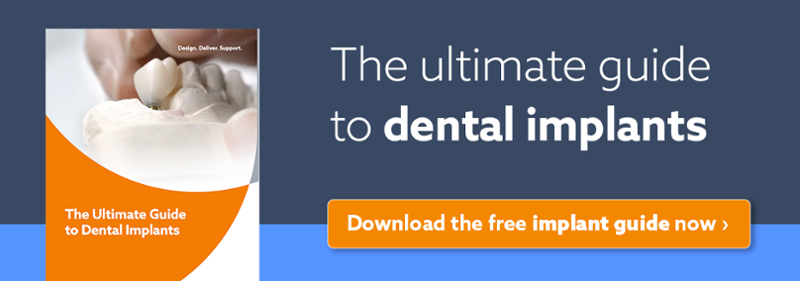Dental implants can frequently provide an optimal way to replace missing teeth. Over the past few years, the materials and techniques used in dental implants have been significantly developed and improved. While the advantages of dental implants are undeniable, treatment is technique-sensitive, expensive, and often, bone grafting is needed to ensure the procedure is a success. It is estimated that around half of the number of patients seeking implant treatment have bone deficiencies, or bone that is frequently insufficient to accommodate the correct size of the implant(s). The choice of bone grafting material will depend on the patient’s wishes and the complexity of the bone deficiency.

Autograft
An autograft is often regarded as the “gold standard” of bone grafting for a few key reasons. The patient’s own bone is used in an autograft, wihch ensures the bone is sterile, biocompatible, and easily manipulated. This also allows the microscopic architecture of autogenous bone to be perfectly matched. Bone used in an autograft must be harvested from another site, which may be intraoral or extraoral, so additional surgery is required. Favorable sites for bone harvesting include the retromolar area, the chin, and edentulous areas. The harvested bone is fixed in place with screws and membranes.
Allograft
An allograft is generally sourced from cadaver bone which must be extensively treated to avoid cross-contamination and ensure it is neutral to immune reactions. Although the risk of disease transmission is a possibility, it is an extremely low risk and allograft risks are frequently outweighed by the benefits. Fresh bone is rarely used. Instead, the used bone is freeze-dried or demineralized freeze-dried bone. This material is available in several forms, including particulate or bone blocks. Allograft materials tend to resorb more rapidly than autogenous bone and this graft is often used as a framework for bone repair.
Xenograft
A xenograft is bone harvested from a different species and is usually bovine in origin. This type of bone graft can be very successful when used to provide a framework for bone regeneration or when used in combination with an autogenous graft. The bone is deproteinized, sterilized, and as all organic material is removed, it is both physically and chemically the same as the mineral phase of human bone.
Alloplast
Alloplastic grafting material is synthetically derived or made from natural materials. The major advantages of alloplastic bone grafts include zero risk of disease transmission and low antigenicity. Alloplastic grafting materials include hydroxyapatite, dicalcium phosphates, and bioactive ceramics. These may be used as fillers or combined with autogenous bone to provide an osteoconductive framework for bone. They come in resorbable and nonresorbable forms, allowing for customization according to pore sizes and porosity levels. Alloplastic bone grafts that use a large particle size have been found to be particularly successful since they allow for adequate bone ingrowth.
Developing synthetic bone grafting materials is challenging, both from a biological and surgical perspective. Biodegradable bioceramics and natural and synthetic polymers are already widely used. One of the most important factors to consider is the rate of degradation when choosing materials to gain vertical height in bone. Bioceramics have been found to degrade predictably, allowing progressive replacement by lamellar true bone. As newer biomaterials are introduced, these will have more predictable graft resorption rates, making them even more suitable for use as frameworks for bone augmentation.
Various combinations of techniques and materials can be utilized in bone grafting, so there may not be a singularly perfect bone grafting material for use in implant dentistry. Instead, the choice may rely on opting for the least invasive technique and material that is acceptable for the patient. These choices require continual revision, due to the introduction of newer bone regeneration materials and ongoing research into bone grafting materials.
Please be reminded that should you wish to discuss an implant case in more detail, our experienced technical team is available to assist you.
Click here to schedule a consultation with our technical team »
